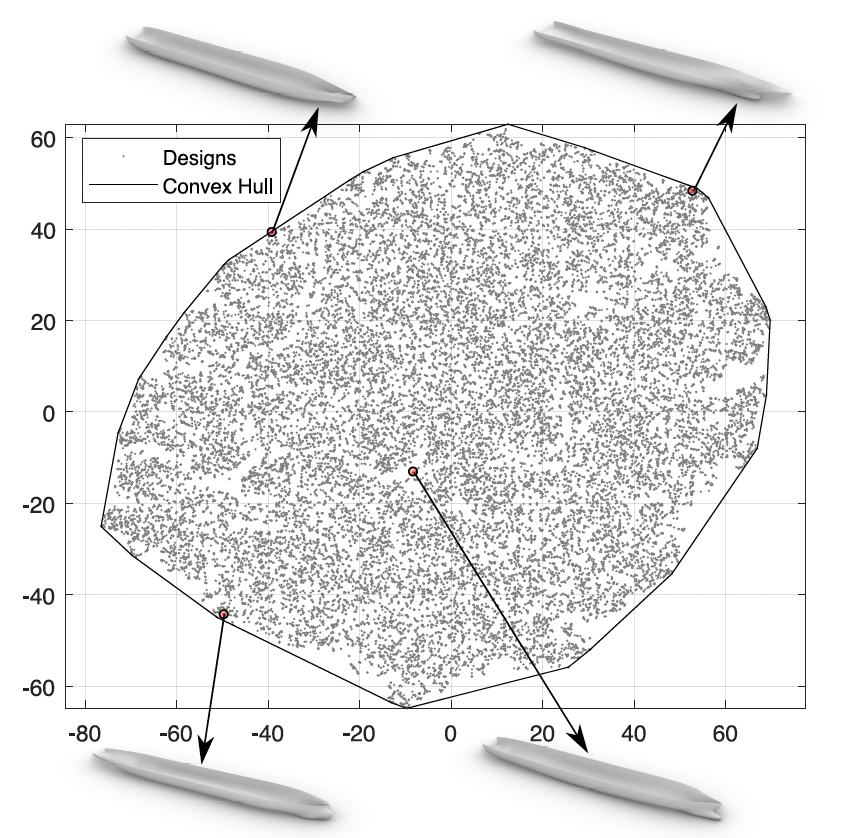Abstract
Typical parametric approaches restrict the exploration of diverse designs by generating variations based on a baseline design. In contrast, generative models provide a solution by leveraging existing designs to create compact yet diverse generative design spaces (GDSs). However, the effectiveness of current exploration methods in complex GDSs, especially in ship hull design, remains unclear. To that end, we first construct a GDS using a generative adversarial network, trained on 52,591 designs of various ship types. Next, we constructed three modes of exploration, random (REM), semi-automated (SAEM) and automated (AEM), with varying levels of user involvement to explore GDS for novel and optimised designs. In REM, users manually explore the GDS based on intuition. In SAEM, both the users and optimiser drive the exploration. The optimiser focuses on exploring a diverse set of optimised designs, while the user directs the exploration towards their design preference. AEM uses an optimiser to search for the global optimum based on design performance. Our results revealed that REM generates the most diverse designs, followed by SAEM and AEM. However, the SAEM and AEM produce better-performing designs. Specifically, SAEM is the most effective in exploring designs with a high trade-off between novelty and performance. In conclusion, our study highlights the need for innovative exploration approaches to fully harness the potential of GDS in design optimisation.
